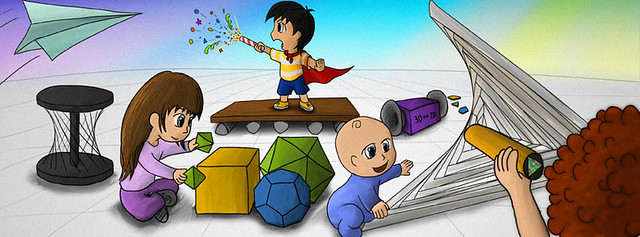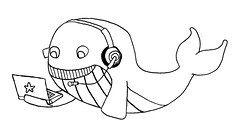Newsletter July 15, 2012

Welcome to adventurous math for the playground crowd! I am Moby Snoodles, and I love to receive mail at moby@moebiusnoodles.com

Paul Salomon from Math Munch, a weekly digest of the mathematical internet, writes:
The Moebius Noodles newsletter was fantastic! I’m expecting my first child in November, a girl. Seeing how well you understand math, I am really excited to have Moebius Noodles on my side as I try to help this girl love life. Thanks so much!
Happy news and glad words, Paul! I bet you will have some good baby math games to share very soon, too!
Book news
One of my favorite aspects of making the book is the transformation of ideas. It all starts from experience design. Then we play with kids, and the designs change – a lot! The ideas become alive. Next, we express these lively ideas in text – and texts are, in turn, represented as pictures. Illustrations, just like texts, go through many drafts and changes. Here is an example from the chapter about iterations of function machines.
November 1998
The cover of the Humanistic Mathematics Network Journal, featuring iteration of a function machine that halves numbers or objects, from the article on young math by Maria Droujkova.
January 2003
Children intent on working with a function machine that doubles the number of toy frogs.
July 2012
Two drafts of the “blueprint” page from the “Moebius Noodles” chapter about iterations. We changed from counters to cookies because you can – at least theoretically – break cookies into smaller and smaller pieces, forever.
Our blogs
Kids Consult is an amazing consulting company founded by three girls, who are just a couple of years older than the target audience of the “Moebius Noodles” book. They review mathematics games, puzzles, books and other materials. We asked them to review three chapters from the “Moebius Noodles” book. Check out the full review on our blog!
Function Machine
- We love the illustration at the top of this page. It really adds reality to the concept.
- Even though this is the most “mathy” of the set, it’s also the most interesting. This is probably because it has no pre-prescribed instructions. Even though the others do need directions and examples, try not to get too constrictive – some parents might think that these are the only variations for the activities. Be sure to mention that those are only possibilities.
Yelena and her son had a chat about signs and symbols – a central young math topic that is likely to play a large role in the next book we are preparing to write. Here is a part of their conversation; read the rest at our blog. I love how Yelena casually weaves a math idea of combining symbols into her son’s play.
Son: Mama, when my tree house is finished, I’m going to invite all my friends and put a big sign “no girls allowed”
Mom: How would you make a sign like that?
Son: Easy, I’ll just make a big red circle with a thick line across like that (draws in the air) and there will be a girl on it, like on bathroom doors.
Mom: Ok, but what if your cousin A comes to visit? Can she play in your tree house? (My son loves playing with his oldest cousin)
Son: (after some thinking about it) Sure!
Mom: But then you need to make a different sign. What would it look like?
Son: (after some more thinking) Ok, I’ll just put her picture next to the other sign. It has to be a smiling picture.
Lapware
Are math snakes in the picture moving or are they not?! Most people will see the motion if they keep focusing on different parts of the picture. Show this gem to your kids, for a beautiful “math minute” together. This mathemagical optical illusion, shared by our friend and supporter Science Jim, is an example of a fractal – that is, a self-similar picture. Self-similarity is deeply meaningful for young kids. It is one of the key topics in the “Moebius Noodles” book.
Talk to you again July 30th!
Moby Snoodles, aka Dr. Maria Droujkova
Related Posts
Posted in Newsletter










Leave a Reply